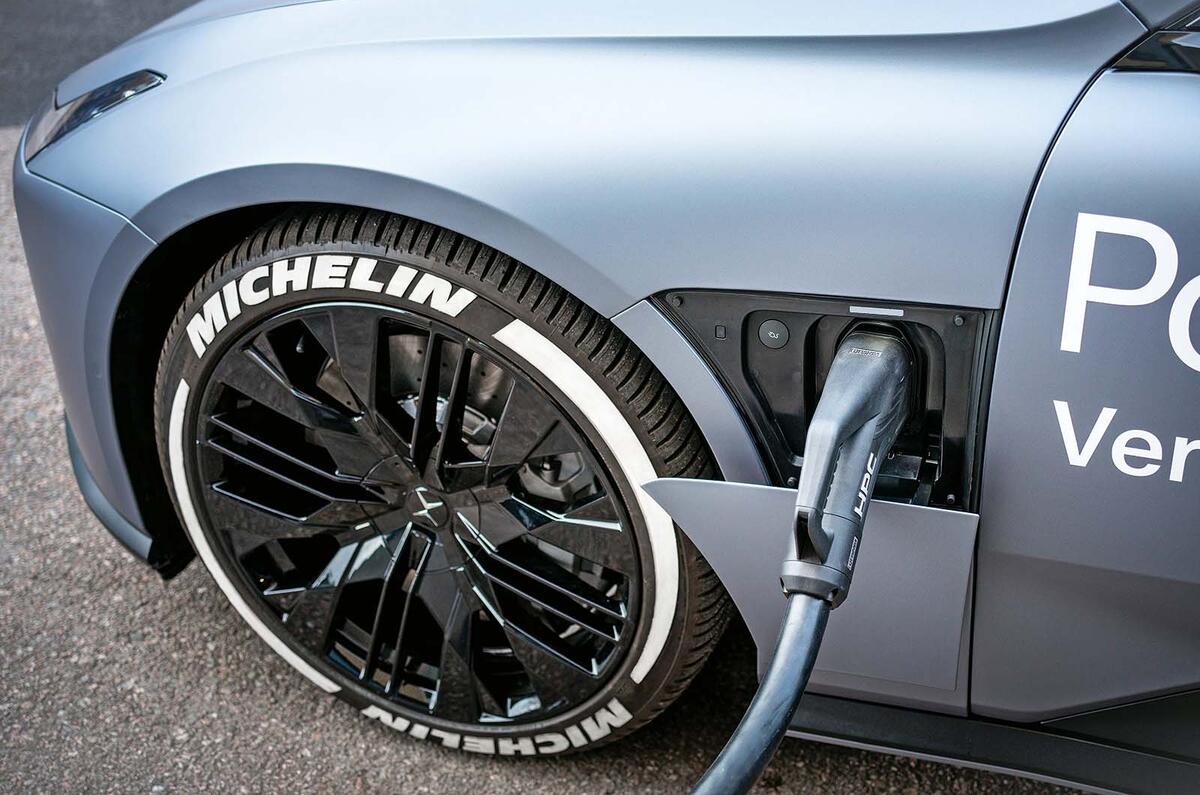Emerging technologies are often flawed in a way that makes it impossible to imagine them improving beyond that stage. Such is the case with electric cars and the still thorny issue of how long it takes to charge one on longer journeys.
Leaving charger availability aside for a moment, 45 minutes to bring a 400V car from 10 or 20% charge back up to 80% and, say, 30 minutes to do the same for an 800V car is still unacceptable to many drivers.
Back in 2021, we reported on how Storedot had developed a silicon-dominant lithium ion battery anode technology, which it called XFC (for ‘extreme fast charge’). The technology was still at the laboratory stage at the time, but the firm expected it would cut charge times by 50% with no extra cost.
Recently it was proved that the technology works not only at laboratory level but also in a full-size battery pack fitted in a current, driveable, car.
The test was carried out by Storedot’s technology partner, Polestar, using a prototype Polestar 5. Polestar’s engineers set up a test to charge the battery from 10% state of charge (SOC) to 80% within 10 minutes, but actually the technology exceeded expectations by a slight margin, reaching 82% in the allotted time.
A 77kWh battery pack was specially commissioned to fit the car, and Polestar said it has the potential for capacity to be tweaked to 100kWh. As it stands, the 10-minute charge time would be equivalent to a range increase of 200 miles.
The reality of operating EVs on longer trips, though, and what numbers like these add up to in real-world convenience terms, often won’t tell the whole story. One key point to emerge from the test relates to a marked improvement in the charge curve.
Normally, fast charging rates can drop significantly as the battery’s SOC increases during charging, so by the time a battery reaches 80%, it may be charging at a much slower rate than it was at 10% or 20%.
In this test, the opposite happened. Polestar engineers saw the charge rate increase from 310kW at 10% SOC to more than 370kW at 80%. This makes it far more worthwhile to grab a ‘splash and dash’ charge while stopping on a trip for some other reason, when the battery isn’t that depleted. A driver plugging in at 50% SOC could be away again at 80% in just five minutes.
Those 10- and five-minute timescales are much closer to that of refuelling an ICE car with petrol or diesel, especially given that there’s no need to stand there holding the pump, then maybe queuing to pay.
Apart from the obvious convenience to the driver doing the charging, ultra-fast charge speeds will also free up chargers more quickly for the next person.
Polestar believes this to be a world-first. It said nothing was added outside the battery pack and the 5 still had its standard cooling pump and fan. It also said the battery technology could appear in its production cars in the next two to three years.




Join the debate
Add your comment
No word on the crucial piece of information - how this affects battery longevity
Absolutely right. Billions are being spent by the Chinese, Japanese, South Koreans and the US developing new battery chemistry and solid state batteries so I remain a little cynical as to what small companies can achieve, especially as it is a huge leap from the Lab to mass production. The key is to achieve ultra rapid charging without it having any effect on battery degradation. This will require years of testing to satisfy EV manufacturers. The batteries need to exceed the benchmark already achieved by manufacturers which is for the battery life, without significant degradation, to be greater than the life of the vehicle.
More useful would be how to halve the cost at no extra time! It currently costs more to charge a typical electric car at a public chargepoint than to get the same amount of range in petrol for a similar ICE vehicle!
Why does in need another two three years to bring it to market?, also, great though this will be,there still remains that the infrastructure countrywide isn't up to standard yet.